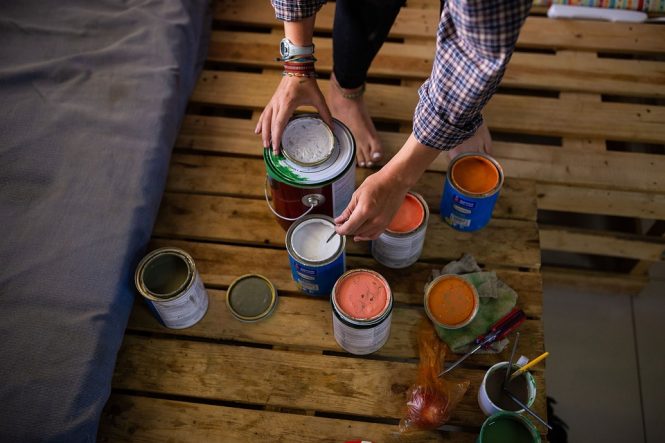
Blending Paint Colors to Create an Atmosphere: A Guide to Setting the Mood with Color
When it comes to transforming a space, few elements can make as significant an impact as the colors on the walls. The right paint color can elevate the mood, set the tone, and even influence the way we feel. Blending paint colors is an artful way to create a unique atmosphere that reflects your personality and style. In this article, we’ll explore the world of color blending and provide you with the tips and techniques needed to craft the perfect blend for your space.
Understanding Color Psychology
Before diving into the world of color blending, it’s essential to understand the basics of color psychology. Different colors can evoke distinct emotions and moods, ranging from calm and soothing to energetic and stimulating. Here’s a brief overview of the primary color categories and their corresponding effects:
- Warm Colors (e.g., red, orange, yellow): Stimulating, energetic, and inviting
- Cool Colors (e.g., blue, green, purple): Calming, soothing, and relaxing
- Neutrals (e.g., beige, gray, white): Versatile, balanced, and harmonious
The Art of Blending Paint Colors
Blending paint colors involves combining two or more colors to create a unique shade that’s greater than the sum of its parts. This technique allows you to customize your color palette and achieve a specific atmosphere. Here are some tips for blending paint colors:
- Start with a base color: Choose a dominant color that sets the tone for your space. This will serve as the foundation for your blend.
- Add a secondary color: Introduce a secondary color that complements or contrasts with your base color. This will add depth and interest to your blend.
- Experiment with ratios: Play with the ratio of base color to secondary color to achieve the desired effect. A general rule of thumb is to start with a 70:30 or 80:20 ratio and adjust to taste.
- Consider the 60-30-10 rule: Allocate 60% of your blend to the dominant color, 30% to the secondary color, and 10% to an accent color (if desired). This will create a balanced and harmonious palette.
Popular Color Blends for Different Atmospheres
Here are some popular color blends that can help create distinct atmospheres:
- Tranquil Retreat: Blend soft blues (e.g., sky blue, light blue) with creamy whites or pale grays for a calming and relaxing atmosphere.
- Vibrant Oasis: Combine warm oranges (e.g., coral, tangerine) with deep blues or purples for a stimulating and energetic atmosphere.
- Nature-Inspired: Mix earthy greens (e.g., sage, moss) with warm beiges or tans for a natural and organic atmosphere.
- Sophisticated Luxury: Blend rich blacks or dark grays with metallic silvers or golds for a glamorous and sophisticated atmosphere.
Tips for Achieving a Seamless Blend
To ensure a seamless blend, keep the following tips in mind:
- Use a color wheel: Refer to a color wheel to identify harmonious color combinations and avoid clashing hues.
- Choose colors with similar undertones: Select colors with similar undertones (e.g., warm, cool, neutral) to create a cohesive blend.
- Test your blend: Apply a small sample of your blend to a wall or surface to ensure the colors work well together.
- Consider the lighting: Take into account the natural and artificial lighting in your space, as it can affect the appearance of your color blend.
Conclusion
Blending paint colors is an artful way to create a unique atmosphere that reflects your personality and style. By understanding color psychology, experimenting with different ratios, and considering the 60-30-10 rule, you can craft a customized color palette that sets the mood and tone for your space. Whether you’re aiming for a tranquil retreat, vibrant oasis, or sophisticated luxury, the world of color blending offers endless possibilities. So, get creative, and start blending your way to a space that truly reflects your essence!